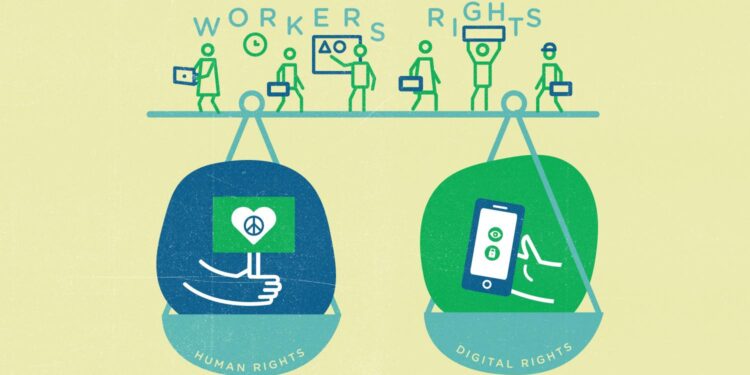As artificial intelligence continues to evolve and embed itself deeper into the fabric of online life, questions around digital rights and the authenticity of information are mounting. In the latest edition of Balkan Insight’s Digital Rights Review, experts and advocates examine the growing uncertainty over what constitutes reality on the internet. From deepfakes to AI-generated content, the boundary between fact and fiction is increasingly blurred, raising urgent concerns about misinformation, privacy, and the future of digital freedom in the Balkans and beyond.
The Rise of AI Generated Content and Its Impact on Digital Truth
The proliferation of AI-generated content has fundamentally altered the digital landscape, challenging traditional notions of authenticity and trust. Algorithms capable of producing hyper-realistic text, images, and videos blur the lines between fact and fabrication, making it increasingly difficult for users to discern credible information. Platforms once heralded for democratizing content creation now grapple with the unintended consequences of unchecked synthetic media, which range from manipulated political messaging to deceptive viral marketing campaigns. This shift not only exacerbates misinformation but also fuels skepticism towards legitimate sources, undermining the very foundation of online discourse.
As AI tools become more accessible and sophisticated, new frameworks for verification and accountability are urgently needed. Stakeholders are considering a range of interventions, including:
- Enhanced AI detection systems leveraging machine learning to flag synthetic content.
- Transparent digital watermarks embedded within generated media to certify origin.
- Legislative measures aimed at regulating the creation and distribution of AI-generated materials.
Below is a concise overview illustrating the evolving dynamics between AI-generated content and public trust:
| Aspect | Impact | Response |
|---|---|---|
| Content Authenticity | Blurring of reality and fiction | AI-detection tools rollout |
| Public Trust | Heightened skepticism | Media literacy campaigns |
| Regulatory Action | Patchwork policies worldwide | Calls for unified standards |
Challenges in Regulating Online Misinformation Amid Advancing Technology
Regulators face an increasingly complex landscape as artificial intelligence and other technological advancements accelerate the creation and dissemination of online content. The rapid evolution of deepfake technology, algorithmically tailored misinformation, and synthetic media has outpaced the capacity of traditional oversight mechanisms. Legal frameworks remain fragmented, and the global nature of the internet complicates jurisdictional authority, leaving policymakers struggling to balance between protecting free expression and curbing harmful falsehoods.
Adding to the challenge is the sheer volume and velocity of information flowing through social platforms, where decentralized moderation and automated content curation dominate. Platforms themselves grapple with transparency and accountability issues, often relying on opaque algorithms that can inadvertently amplify misleading narratives. The table below summarizes key obstacles currently hindering effective regulation:
| Challenge | Impact | Regulatory Barrier |
|---|---|---|
| Cross-border enforcement | Delayed or inconsistent actions | Lack of international cooperation |
| AI-generated content detection | Difficulty in verification | Technological limitations |
| Platform transparency | Obscured content dissemination patterns | Corporate resistance and opacity |
| User privacy concerns | Constraints on data monitoring | Legal restrictions |
- Reactive policies often lag behind technological innovations.
- Inconsistent definitions of misinformation lead to enforcement disparities.
- Resource limitations hamper thorough investigation and intervention.
Strategies for Strengthening Digital Rights and Ensuring Accountability Online
In an era where artificial intelligence continuously reshapes the digital landscape, reinforcing individuals’ rights and fostering transparency have become imperative. Civil society organizations and policymakers advocate for robust legal frameworks that not only protect personal data but also address the proliferation of AI-generated content. These frameworks should prioritize user consent, data portability, and the right to explanations about automated decisions. Moreover, digital literacy programs aimed at enhancing public awareness are crucial. By equipping citizens with skills to critically evaluate online information, societies can build resilience against misinformation and manipulation.
Accountability mechanisms need to be both tech-savvy and inclusive. Platforms must implement comprehensive content moderation systems that balance free speech with protection from harm, while enabling users to report abuses effortlessly. Transparency reports and independent audits can serve as watchdog tools to hold digital actors responsible. Below is an overview of key strategies showing how multi-stakeholder collaboration can drive meaningful change:
| Strategy | Description | Stakeholders |
|---|---|---|
| Legal Reform | Updating laws to address AI impact on privacy and content authenticity | Governments, Regulators |
| Digital Literacy | Educational programs fostering critical thinking about digital content | Schools, NGOs, Media |
| Transparent Algorithms | Open disclosure of AI content moderation criteria and processes | Tech Companies, Watchdogs |
| User Empowerment | Enhanced tools for reporting and contesting harmful content | Platforms, Users |
In Retrospect
As AI technologies continue to evolve and blur the lines between reality and fabrication, the challenge of safeguarding digital rights grows ever more complex. Balkan Insight’s review highlights the urgent need for robust frameworks that can address these uncertainties while preserving freedom of expression and trust online. In an era where distinguishing fact from fiction becomes increasingly difficult, the conversation around digital rights is not only relevant but essential for the future of open and secure digital societies.
















